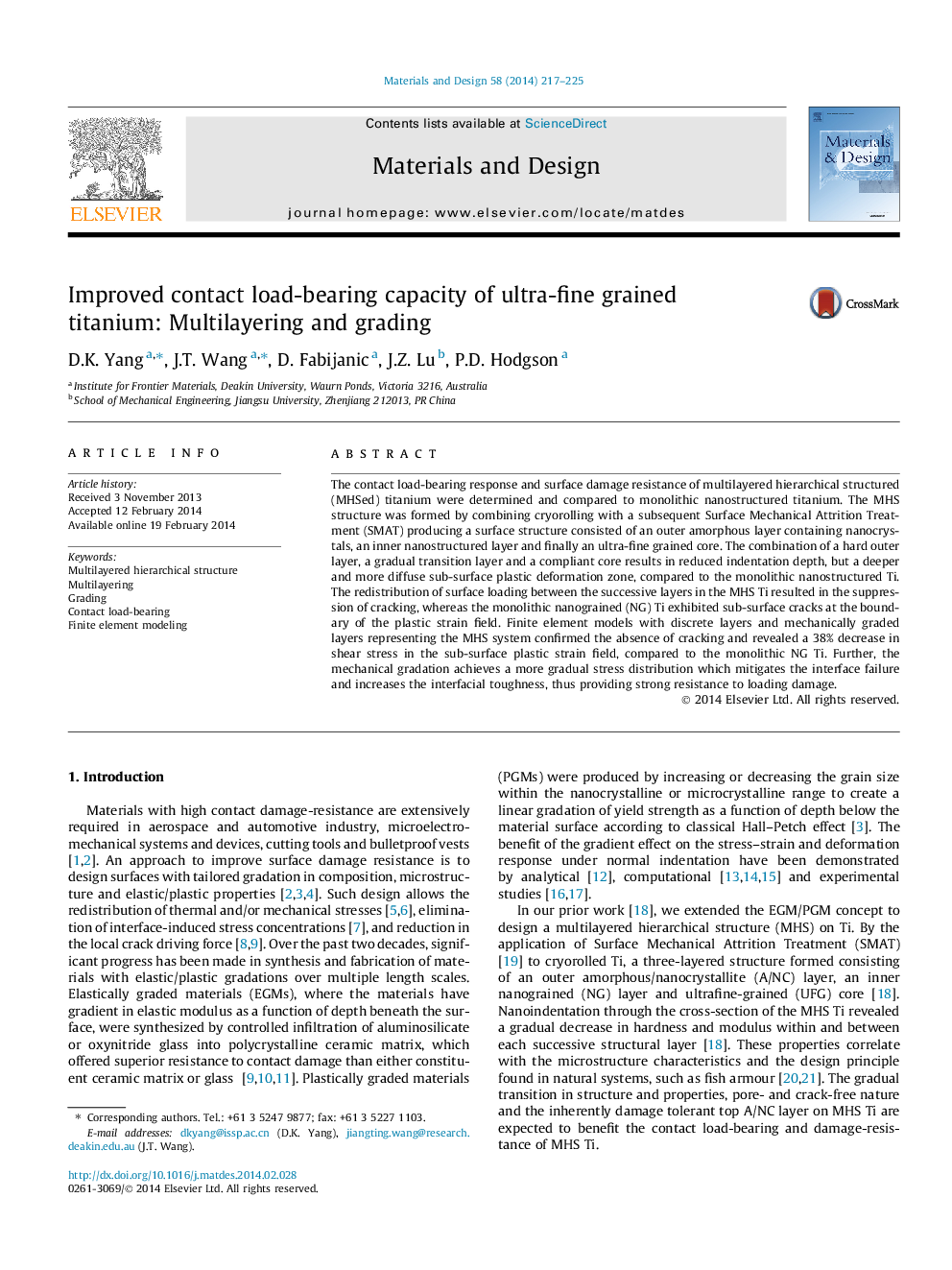| Article ID | Journal | Published Year | Pages | File Type |
|---|---|---|---|---|
| 829270 | Materials & Design (1980-2015) | 2014 | 9 Pages |
•A multilayered hierarchical structured (MHS) Ti was formed by surface treatment.•The gradient layers in the MHS Ti provide a gradual stress distribution.•The gradation in the MHS Ti improves the resistance to loading damage.•Finite element modeling shows a 38% reduction in shear stress during indentation.
The contact load-bearing response and surface damage resistance of multilayered hierarchical structured (MHSed) titanium were determined and compared to monolithic nanostructured titanium. The MHS structure was formed by combining cryorolling with a subsequent Surface Mechanical Attrition Treatment (SMAT) producing a surface structure consisted of an outer amorphous layer containing nanocrystals, an inner nanostructured layer and finally an ultra-fine grained core. The combination of a hard outer layer, a gradual transition layer and a compliant core results in reduced indentation depth, but a deeper and more diffuse sub-surface plastic deformation zone, compared to the monolithic nanostructured Ti. The redistribution of surface loading between the successive layers in the MHS Ti resulted in the suppression of cracking, whereas the monolithic nanograined (NG) Ti exhibited sub-surface cracks at the boundary of the plastic strain field. Finite element models with discrete layers and mechanically graded layers representing the MHS system confirmed the absence of cracking and revealed a 38% decrease in shear stress in the sub-surface plastic strain field, compared to the monolithic NG Ti. Further, the mechanical gradation achieves a more gradual stress distribution which mitigates the interface failure and increases the interfacial toughness, thus providing strong resistance to loading damage.
